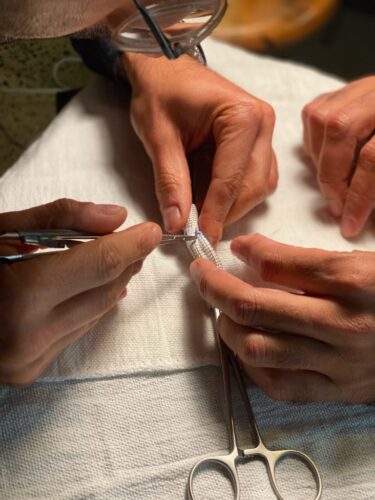Image courtesy of Naiem Nassiri
Thoracoabdominal aneurysms (TAAAs) occur when the aorta—the artery carrying blood from the heart to the rest of the body—balloons and weakens, which can lead to internal bleeding. Up until the past few years, TAAA surgery required highly invasive surgeries with high chances of debilitating side effects, including paraplegia, or lower body paralysis.
Endovascular Debranched Aortic Repair (EDAR), a new surgical technique performed at Yale, was first invented by Patrick Kelly of Sanford Health in South Dakota. Vascular surgeon Naiem Nassiri learned about the technology under Kelly’s guidance. “I built six prototypes on my breakfast table, and some took up to six hours to build,” Nassiri said. Together with Prashanth Vallabhajosyula, director of Yale’s Aortic Institute, the medical duo has implemented EDAR to treat the weakened aorta in a minimally-invasive manner. “TAAA surgery used to involve patients getting their entire chest, abdomen, and diaphragm split open, and the procedures were attached to high morbidity and mortality,” Vallabhajosyula said.
But EDAR simply involves a stent that is inserted into the body through two small penetrations made in the groin using a needle. The stent, compressed in a tube, is delivered through blood vessels to the aorta. “We’ve done about sixteen cases and haven’t encountered any paraplegia cases,” Vallabhajosyula said.
EDAR shows tremendous promise to treat TAAAs. “What is wonderful about this platform is that at any time, you can decide to stop the operation and bring the patient back at a later date,” Nassiri said. “This minimizes the harm for the patient.” With the surgeons’ expertise, TAAA patients now have new hope for better outcomes.

